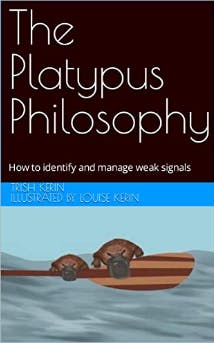Prevent Process Safety Incidents by Identifying Weak Signals
Over my career, I have always been fascinated and frustrated that we continue to see incidents repeated. Not the exact same incident, but so similar that it is disheartening we have not learned the lesson already.
A recent example is the train derailment that occurred in East Palestine, Ohio. We know a wheel overheated and subsequently the train carrying bulk quantities of hazardous chemicals derailed. In 2009, in Viareggio, Italy, a train carrying LPG derailed due to a suspected failure in the axle of a carriage. This incident killed 32 people. And in 2013, in Lac-Mégantic, Quebec, Canada, a train’s braking system failed to engage, causing derailment and killing 47. While the source of each of these derailments differed, some similarities exist in the consequences and the cause. Issues with the axle and wheel assemblies were implicated. Trains have been derailing since they started as a form of transport, so why is it still happening?
Weak signals occur daily, but we fail to notice their significance.
These derailments had warning signs or weak signals but were overlooked or misunderstood. Weak signals occur all around us every day, but we often either fail to notice them or fail to notice their significance. A weak signal is seemingly unconnected to other information, a piece of data that makes no sense on its own. It might be an unexpected or unexplainable alarm, a lead indicator that may be easily dismissed as false, or an observation by a worker. Because these weak signals appear to have no context, they are easy to ignore, but what if they tell us something important? They may be identifying a creeping change that is now reaching the point of potentially causing an incident.
This is where “The Platypus Philosophy” comes in. The platypus is a unique and unlikely creature. Endemic to Australia, the platypus is a monotreme (egg-laying mammal) with the bill of a duck, the claws of an otter, and the tail of a beaver. It can inject a toxin and has bio-fluorescent fur under ultraviolet light. They are nocturnal-crepuscular (active at night or during twilight) and use electroreceptors to hunt for food underwater. This is a very unusual collection of attributes. In fact, there is no other creature like it. The platypus is evidence that the impossible is possible.
If you’re out walking one evening and see a glimpse of the bill, you might mistake it for a duck. If you did not investigate further, you could happily make that assumption and not realize you have seen a platypus. This is like a weak signal in your facility. If you don’t investigate further, you may think you have a meaningless piece of data, but it may be something far more serious. A structured approach is needed to identify and manage these weak signals in our facilities. To do this, we need to remember the platypus. The following framework can be applied to help identify and manage the “platypuses” in your facility:
- Partial sighting reported and recorded.
- Link the data together – where was it spotted, and what else was around it?
- Assess the data – were there any special conditions?
- Tasks and timing – what else was happening, were there any simultaneous activities?
- Yesterday and yonder – has something similar happened here or elsewhere before?
- Perceive the scenarios – what are the hazards and what consequences could develop?
- Understand the controls – what controls can you put in place?
- Secure the platypus – discuss the findings with the workforce and communicate the plan to manage the weak signal.
So, the next time you see something strange that you can’t quite explain, look deeper, run through the platypus steps and ask yourself “where is the platypus hiding?”
You can read more detail about this framework in my new book “The Platypus Philosophy” (2023), available from Amazon.
About the Author
Trish Kerin, Stay Safe columnist
Director, Lead Like Kerin
Trish Kerin is an award-winning international expert and keynote speaker in process safety. She is the director of Lead Like Kerin Pty Ltd, and uses her unique story-telling skills to advance process safety practices at chemical facilities. Trish leverages her years of engineering and varied leadership experience to help organizations improve their process safety outcomes.
She has represented industry to many government bodies and has sat on the board of the Australian National Offshore Petroleum Safety and Environmental Management Authority. She is a Chartered Engineer, registered Professional Process Safety Engineer, Fellow of IChemE and Engineers Australia. Trish also holds a diploma in OHS, a master of leadership and is a graduate of the Australian Institute of Company Directors. Her recent book "The Platypus Philosophy" helps operators identify weak signals.
Her expertise has been recognized with the John A Brodie Medal (2015), the Trevor Kletz Merit Award (2018), Women in Safety Network’s Inaugural Leader of the Year (2022) and has been named a Superstar of STEM for 2023-2024 by Science and Technology Australia.


